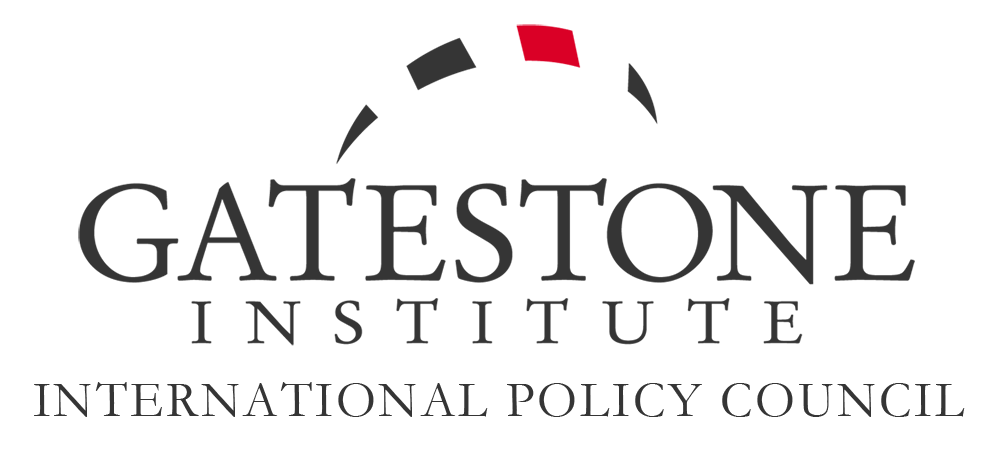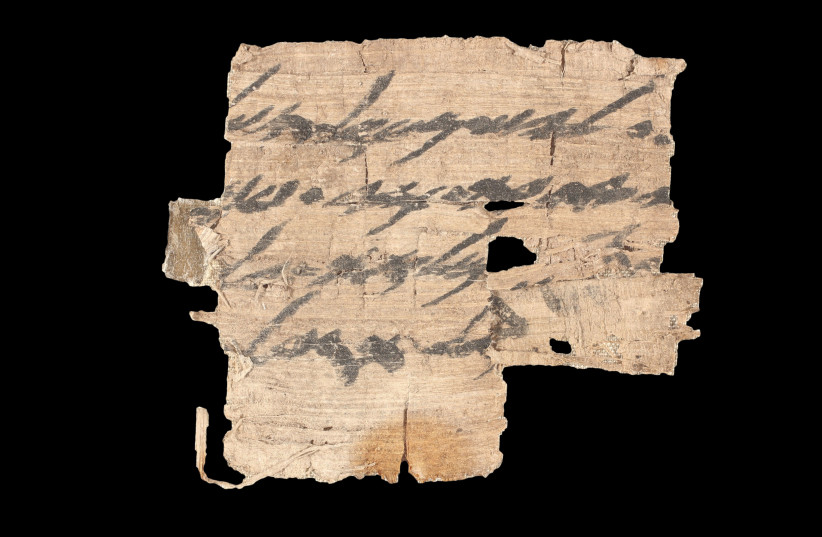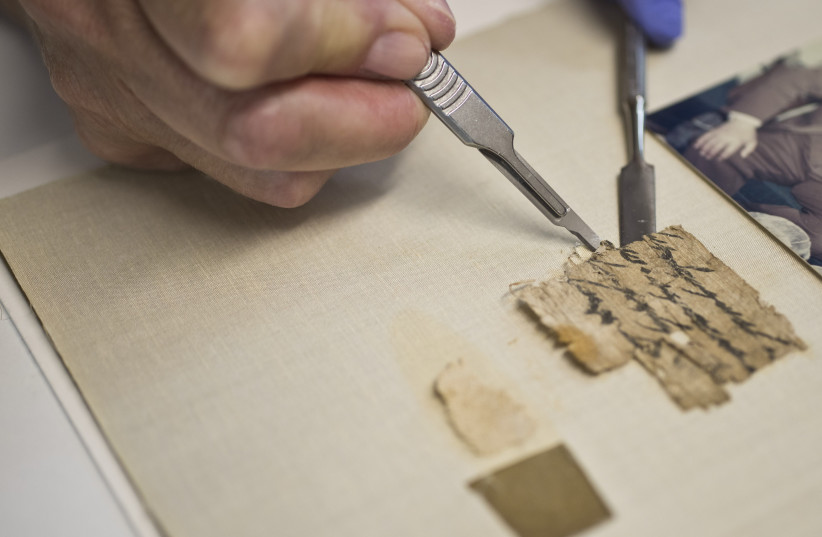 To mułłowie z Iranu, których media z zadowoleniem przyjęły i wychwalały nożowniczy atak Salmana Rushdiego, inspirują, finansują i zbroją Hezbollah, Hamas, Palestyński Islamski Dżihad, jemeńskich Huti i inne islamistyczne grupy terrorystyczne na całym świecie. Bez wsparcia administracji Bidena dla mułłów grupy te nie przeprowadzałyby ataków dronów i rakiet na sojuszników Ameryki. Na zdjęciu: Rushdie w 2018 r. (Zdjęcie: Joel Saget/AFP via Getty Images)
To mułłowie z Iranu, których media z zadowoleniem przyjęły i wychwalały nożowniczy atak Salmana Rushdiego, inspirują, finansują i zbroją Hezbollah, Hamas, Palestyński Islamski Dżihad, jemeńskich Huti i inne islamistyczne grupy terrorystyczne na całym świecie. Bez wsparcia administracji Bidena dla mułłów grupy te nie przeprowadzałyby ataków dronów i rakiet na sojuszników Ameryki. Na zdjęciu: Rushdie w 2018 r. (Zdjęcie: Joel Saget/AFP via Getty Images)
 Administracja Bidena i Iran atakujący Rushdiego
Administracja Bidena i Iran atakujący Rushdiego
Khaled Abu Toameh
Tłumaczenie: Małgorzata Koraszewska
Pełnomocnicy i sympatycy Iranu grożą zamordowaniem znanej libańskiej prezenterki, Dimy Sadek, ponieważ ośmieliła się skrytykować w zeszłym tygodniu atak nożowniczy na urodzonego w Indiach brytyjsko-amerykańskiego powieściopisarza Salmana Rushdiego w Chautauqua w stanie Nowy Jork.
Od czasu tej wypowiedzi Sadek w mediach społecznościowych i wiadomościach wysyłanych na jej osobisty numer telefonu trwa kampania podżegania i gróźb morderstwa i gwałtu.
Groźby zaczęły się natychmiast po tym, jak opublikowała na Twitterze zdjęcie ajatollaha Ruhollaha Chomeiniego, pierwszego “Najwyższego Przywódcy” Iranu, oraz Kasema Solejmaniego, dowódcy irańskiego Korpusu Strażników Rewolucji Islamskiej, zamordowanego przez USA w Iraku w 2020 roku.
Sadek napisała nad zdjęciem: “Szatańskie wersety”. To tytuł powieści Rushdiego, inspirowanej życiem islamskiego proroka Mahometa, opublikowanej w 1988 roku.
W następnym roku Chomeini wydał fatwę (dekret religijny), w której wzywał “muzułmanów całego świata do szybkiego wykonania egzekucji autora i wydawców tej książki”, aby “nikt już nie odważył się obrażać świętych wartości islamu”.
Kilka godzin później Sadek napisała na swoim koncie na Twitterze, że otrzymała groźby śmierci i że stoi w obliczu kampanii podżegania, zwłaszcza ze strony wspieranej przez Iran grupy terrorystycznej Hezbollah i jej zwolenników w Libanie.
“Od rana trwa przeciwko mnie kampania podżegająca, która osiągnęła punkt publicznego wzywania do rozlewu krwi” – napisała Sadek.
“Kampanię rozpoczął Dżawad Hassan Nasrallah (syna sekretarza generalnego Hezbollahu). Dlatego mam nadzieję, że ten tweet zostanie uznany za wiadomość dla władz libańskich. Publicznie i oficjalnie oznajmiam, że uważam kierownictwo Hezbollahu za w pełni od teraz odpowiedzialne za każdą krzywdę, jak może mi się przydarzyć.”
Zamieściła też na Twitterze próbkę wymierzonych w nią gróźb. “Hej Dima Sadek, chciałbym ci powiedzieć, że jeśli kiedyś cię zobaczę, zgwałcę cię na oczach wszystkich” – napisał Nabil Kobaisi, Libańczyk.
Inna groźba ze strony obywatela Libanu Hassana Al-Ali zawierała zdjęcie Sadek z komentarzem: “Będziesz następna [po Salmanie Rushdie]”.
Wyrażając oburzenie groźbami, libańska dziennikarka Ghada Oueiss napisała do swoich 1,1 miliona obserwujących na Twitterze: “Za każdym razem, gdy [islamiści] nie zgadzają się z kobietą, oskarżają ją o zdradę, grożą gwałtem i torturami oraz zastraszają jej rodzinę”.
Libański naukowiec Antoine Haddad również zaatakował Hezbollah i innych islamistów na całym świecie za grożenie prezenterce telewizyjnej:
“Zorganizowana akcja przeciwko Dimie Sadek jest przedłużeniem kultury zamachu na Salmana Rushdiego i wszystkich, którzy się z nimi nie zgadzają. Wyjdźcie ze średniowiecza i nauczcie się żyć z opiniami innych ludzi”.
Sadek ma powody, by niepokoić się o swoje życie. Większość gróźb, które otrzymała, pochodziła od zwolenników Hezbollahu, grupy terrorystycznej, która skutecznie kontroluje Liban i podlega bezpośrednio mułłom w Iranie.
Może terroryści i ich panowie w Teheranie jeszcze nie wydali fatwy, by ją zamordować, ale same groźby wystarczą, by zmusić ją i jej rodzinę do zmiany stylu życia i prawdopodobnie ukrywania się lub życia pod ochroną, tak jak Rushdie musiał to robić przez ponad trzydzieści lat.
Libańczycy od dawna nauczyli się, że gróźb Hezbollahu nigdy nie należy lekceważyć. To ta sama grupa, której członkowie zostali skazani za spisek w zabójstwie byłego premiera Libanu Rafika Haririego w zamachu bombowym w 2005 roku w Bejrucie. Hariri, sunnicki muzułmanin, miał bliskie związki z Zachodem i sunnickimi krajami Zatoki. Był postrzegany jako zagrożenie dla wpływów irańskich w Libanie.
Ponadto Hezbollah ma długą historię zastraszania każdego, kto ośmiela się krytykować tę grupę lub jej przywódców.
Ostatnio zwolennicy Hezbollahu zaatakowali libańskiego dziennikarza Hasana Shaabana, który zbierał informacje o strajku okupacyjnym mieszkańców protestujących przeciwko niedoborom wody w ich mieście.
Shaaban powiedział portalowi informacyjnemu Al-Araby Al-Jadeed, że został zaatakowany przez zwolenników Hezbollahu podczas kręcenia filmu o proteście przeciwko kryzysowi wodnemu, na który mieszkańcy cierpią od dawna. Dodał, że grupa ludzi dotkliwie go pobiła i groziła, że go zabiją, jeśli nie wyjedzie.
Powiedział, że pomimo gróźb i kuli, która trafiła w szybę jego samochodu, nadal będzie wykonywał swoją pracę.
Tego samego dnia, w którym Sadek otrzymywała groźby morderstwa i gwałtu, talibska milicja w Kabulu pobiła protestujące kobiety. Kobiety, skandując “Chleb, praca i wolność”, maszerowały w afgańskiej stolicy, przed budynkiem ministerstwa edukacji, zanim milicjanci rozproszyli je strzelając w powietrze. Niektóre kobiety, które schroniły się w pobliskich sklepach, były ścigane i bite kolbami karabinów przez talibskich zbirów.
“Podobnie jak mułłowie [Iranu], głównymi wrogami talibów są kobiety i wolność słowa” – skomentowała Nervana Mahmoud, szanowana egipska komentatorka polityczna.
W innym poście Mahmoud wskazała, że nie widzi żadnej istotnej różnicy między różnymi islamistycznymi grupami terrorystycznymi:
“Salafici, talibowie, mułłowie, Bractwo [Muzułmańskie], Haqqani [afgańska grupa islamistów] mogą mieć różnice teologiczne, ale oni wszyscy zgadzają się co do trzech rzeczy: morderstwo za bluźnierstwo, popieranie mizoginii, odrzucenie wolności słowa. Reszta to bełkot!”
Atak nożowniczy na Salmana Rushdiego i groźby pod adresem libańskiej dziennikarki należy widzieć jako część trwającego dżihadu islamistów (świętej wojny) przeciwko każdemu, kto ośmieli się nie zgadzać z nimi lub ich krytykować.
Mułłowie w Iranie, których media radośnie powitały i wychwalały atak na Rushdiego, inspirują, finansują i zbroją Hezbollah, Hamas, Palestyński Islamski Dżihad, jemeńskich Huti i inne islamistyczne grupy terrorystyczne na całym świecie.
W Iranie mułłowie zintensyfikowali swoje wysiłki, aby wymusić przestrzeganie noszenia hidżabu w ramach tłumienia powszechnego sprzeciwu.
Według Iran Human Rights Monitor w lipcu Iran dokonał egzekucji co najmniej 71 więźniów, w tym czterech kobiet. Większość kobiet straconych w Iranie to ofiary przemocy domowej, które zabiły w samoobronie, zauważyła grupa.
Bez wsparcia Stanów Zjednoczonych dla mułłów grupy te nie groziłyby gwałtem i zabijaniem kobiet. Bez poparcia USA dla mułłów grupy te nie przeprowadzałyby tylu ataków dronami i rakietami na sojuszników Ameryki.
To ci sami mułłowie, którzy teraz mają nadzieję, że administracja Bidena nagrodzi ich setkami miliardów dolarów w ramach nowego porozumienia nuklearnego między Iranem a mocarstwami zachodnimi.
Mułłowie bez wątpienia wykorzystają te pieniądze na kontynuowanie kampanii morderstw i zastraszania. Wykorzystają również pieniądze do umocnienia okupacji czterech krajów arabskich – Syrii, Iraku, Libanu i Jemenu – i będą kontynuować brutalne prześladowania nie tylko ludzi takich jak Salman Rushdie, Dima Sadek i Hasan Shaaban, ale także kobiet, które są ich obywatelkami, a z czasem mieszkanek “Wielkiego Szatana”.
Zawartość publikowanych artykułów i materiałów nie reprezentuje poglądów ani opinii Reunion’68,
ani też webmastera Blogu Reunion’68, chyba ze jest to wyraźnie zaznaczone.
Twoje uwagi, linki, własne artykuły lub wiadomości prześlij na adres:
webmaster@reunion68.com





